The night was insinuated rainy, torrential rainy as you know the nights of May in Mexico City. The central courtyard of the Antiguo Colegio de San Ildefonso, the place where the Mexican artist Frida Kahlo met the muralist Diego Rivera, was decorated, among its historic murals, to receive the Crucero 2024 collection of the house of Dior. The catwalk was opened by a resounding cry in the voice of a mariachi woman: "You deserve a love with lightning and flowers, an affection without fear, of the past and its mistakes", and the singing began more than a parade, a declaration of love, of celebration, but above all, of defense of Mexican women.
As if invoking the daring of Frida Khalo, who traveled to the United States in the early 30s with her Tehuan skirts, wide at the hip, long and colorful, her huipiles (embroidered tunics) and her traditional shirts sewn in Oaxaca, Maria Grazia Chiuri's designs were filled with that spirit. On the catwalk, a pink dress of wide flight accompanied by Texan boots (protagonists of the night) recalled the one worn by the artist in one of her self-portraits. On the fabrics, an animal facility made of embroidered and printed monkeys and parrots recalled that exuberant Mexican fauna that was reflected in his paintings. And the masculine suits, so typical of the house of Dior, echoed the rebellion of a woman who, decades before there was talk of gender roles, already wore pants and jackets seeking to challenge with her dress what was expected of her.
More informationMaria Grazia Chiuri: "Dressing women in a way that does not allow them to move and travel is a kind of grave"
With this catwalk, María Grazia's dream is fulfilled, the prediction is realized. The designer had put the name of Mexico – whom she has baptized a place of the soul – on the table of Dior since 2016, when she landed in the French house.
One of the looks of the Dior cruise collection 2024.YANNIS VLAMOS (YANNIS VLAMOS)
Mexico had gotten into his skin for many decades and that devotion could finally be sewn into this cruise collection. She was inspired by the idea that it was the land where indecipherable rebels such as photographer Tina Modotti or artists Remedios Varo and Leonora Carrington had finally found the fertile ground to be entirely them. She was also deeply permeated by the images of Graciela Iturbide, the portraitist who in black and white had captured the magnificent reality of the people of her land.
A flowery look on the Dior.photo catwalk: Yannis Vlamos (Yannis Vlamos)
In addition, Mexico invoked the memory of a deep internal upheaval that occurred in his younger years when he saw for the first time in Italy an exhibition of Frida Kahlo. That shudder materialized in this collection in the form of butterflies that, "like jewelers for a broken body", perched on necklaces, on the endless braids of the models and on the sublime jacquards.
Fashion, art and crafts come together in Dior's collection in Mexico City.photo: Yannis Vlamos (Yannis Vlamos)
"Grazia found many echoes in her own way of conceiving fashion, women and their bodies, in the ways in which Frida Kahlo went through the experience of disability, ethnicity, her political stance, her gender identity and how she turned this into the engine of her style," explains Mexican curator Circe Henestrosa. who worked closely with the designer to bring this collection to life.
Invoking Frida is invoking Mexican craftsmanship
In pink and with ruffles, one of the 'looks' of the parade. YANNIS VLAMOS (YANNIS VLAMOS)
The defiant airs brought by such an invocation of Frida Kahlo did not stay only on the catwalk. In the front row of the parade, seated in their traditional costumes – which dared to break the almost hegemonic silence of the black of the guests – sat more than 10 Mexican women and men artisans who saw firsthand the pieces they had worked with their hands.
"Frida put clothing and artisanal knowledge at the center of her Cruise 2024 creative process," revealed Maria Grazia.YANNIS VLAMOS (YANNIS VLAMOS)
"Frida made her clothes, the textiles she chose, the very heart of her self-portraits, the photographs they took of her, erasing all barriers and making that Mexican material culture that she exhibited in each of her outfits become art in itself. It's important to talk about this, because many times we don't celebrate craftsmanship enough, and what Dior allows me to do is celebrate this knowledge. Many times craftsmanship is not seen as culture, but Frida put clothing and artisanal knowledge at the center of her creative process, and I want to work with that. It is in itself a narrative similar to that of Dior," says Maria Grazia.
It was precisely Frida's wardrobe, the map that gave clues to Dior's cultural team to choose the artisanal techniques and communities with which she would work.photo: Yannis Vlamos (Yannis Vlamos)
It was precisely Frida's wardrobe, revealed to the world in 2004, after 50 years of being locked in a bathroom on the orders of her husband Diego Rivera before the mourning of his death, the map that gave clues to Dior's cultural team to choose the artisanal techniques and communities with which she would work. They were intense days of work with communities in Chiapas, Puebla and Oaxaca. More than six months of travel, contact and understanding with the artisans who, as Dior's creative director often playfully does, were invited to rethink and intervene icons of the house such as the Bar Jacket or the Lady Dior wallet.
The collaboration between Mexican artisans and the house of Dior, on the catwalk.photo: Yannis Vlamos (Yannis Vlamos)
Pedro Meza, known as Don Pedro, elaborated with other artisans of the Tzotzil communities of Zinacantán and San Juan Chamula gabanes and sashes woven in cotton with embroidery in thread. Remigio Mestas oversaw the creation of four traditional huipiles, illustrating the unique weaving, dyeing and embroidery techniques of four indigenous groups. Hilan Cruz was invited to collaborate on a series of shirts and dresses incorporating embroidery produced in his workshop, reflecting the flora, fauna and cosmogony of his community. And Narcy Areli Morales put on the collection, birds, plants and other natural elements translated into geometric patterns.
The suit was also present at the Dior show.photo: Yannis Vlamos (Yannis Vlamos)
"When I first saw the result of this collaboration I had to cry, and now that I see it it makes me want to cry again," says the designer with red eyes, "it touched my heart, the language she speaks is so sophisticated, so sublime, it is a dream that has been fulfilled."
Vibrant red or pink dresses will celebrate color on the runway.photo: Yannis Vlamos (Yannis Vlamos)
Mexican crafts are not worth more or less because a reputable brand like Dior has chosen them for their dresses, but what this bridge that has been created with the French brand by the hand of Maria Grazia does achieve is to start creating a dialogue with other possible places of use, with other knowledge, With that other position in the front row in a parade that must occupy the owner of the hands that know how to do such an excellent job. That intention that María Grazia seeks with this bet of Dior is concretized: "That fashion, art and crafts are the three at the same level of hierarchy".
One of the last 'looks' of the night.photo: Yannis Vlamos (Yannis Vlamos)
"This conversation can get the tradition to stick and move into the future, because the risk is that we lose this knowledge. I am very sensitive to this concern, I am from the south of Italy where the tradition of passing on the knowledge of embroidery was lost, because the second generation found other interests and saw the heritage of their elders as something old, because the artisanal was seen as something domestic, a thing of women, whose hard work was not recognized. explains the designer.
The designer María Grazia Chiuri says goodbye to the collection with her models. Dior
From the hands of local artisans who complemented and exalted what les petit mains did with each of the costumes of the Cruise 2024 collection in Paris, comes a culminating moment. The closing of the parade, even with the rain lashing the old corridors of the enclosure, leaves all the attendees in silence. 18 models in white dresses embroidered with haughty phrases in red stand in the center of the courtyard. A new cry embraces those dresses, this time in the voices of Vivir Quintana and Mon Laferte: "Every minute, every week, they steal our friends, they kill our sisters, they destroy their bodies, they disappear them. Don't forget their names, Mr. President." María Grazia Chiuri is not silent, if she is in Mexico, inspired by him, unraveling his traditions, remembering the value of his artists, how not to make this last claim with his dresses: that the lives of women be respected.

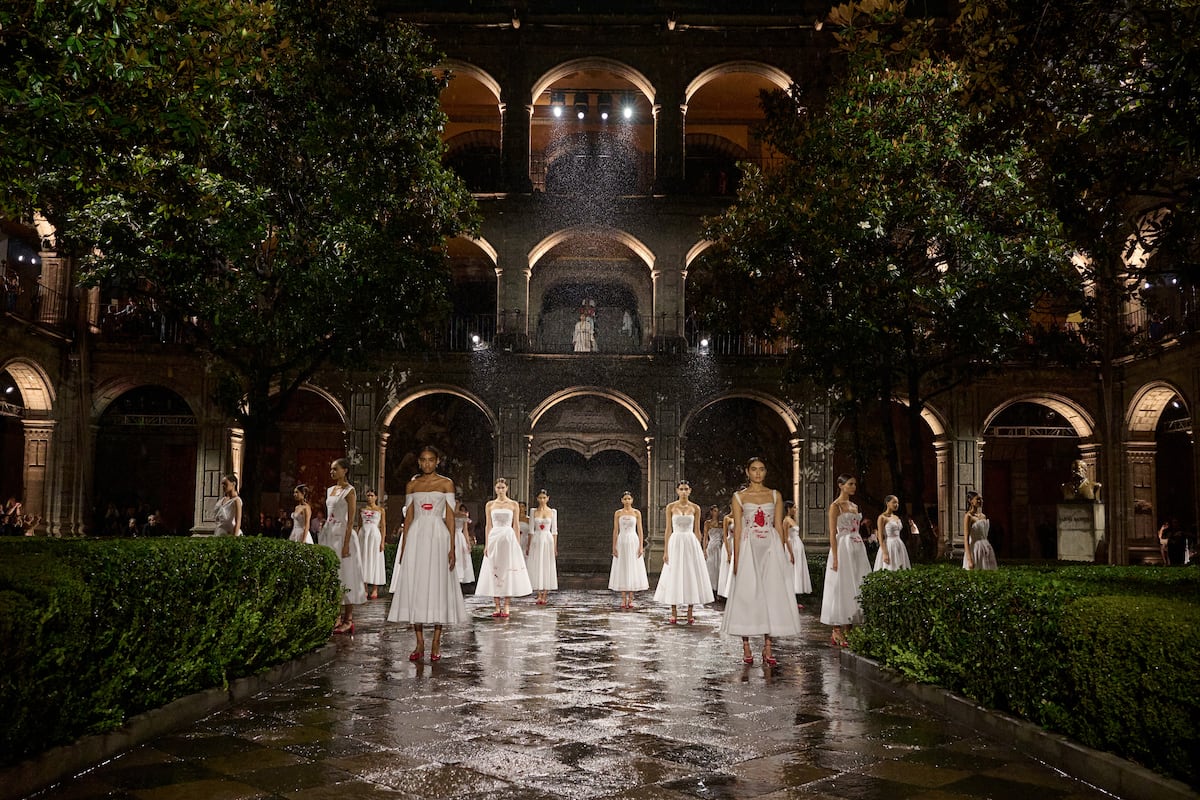



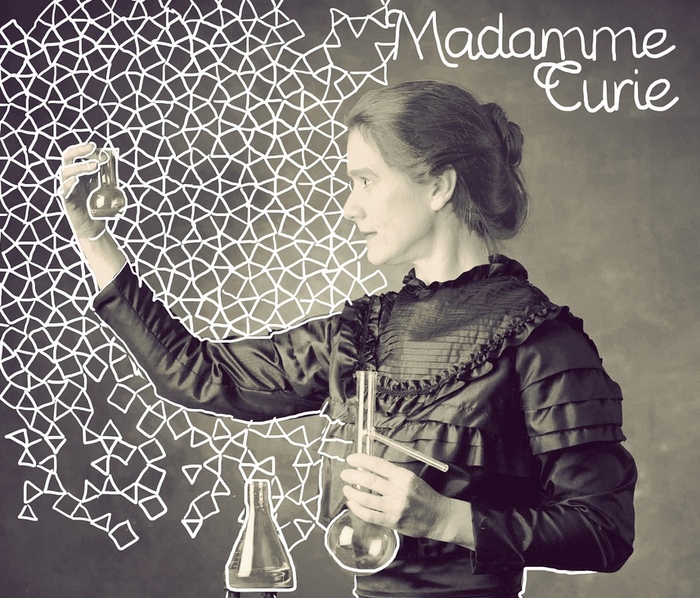
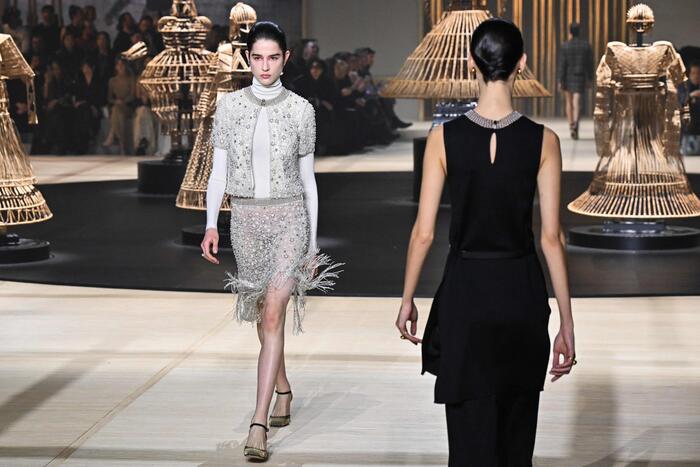
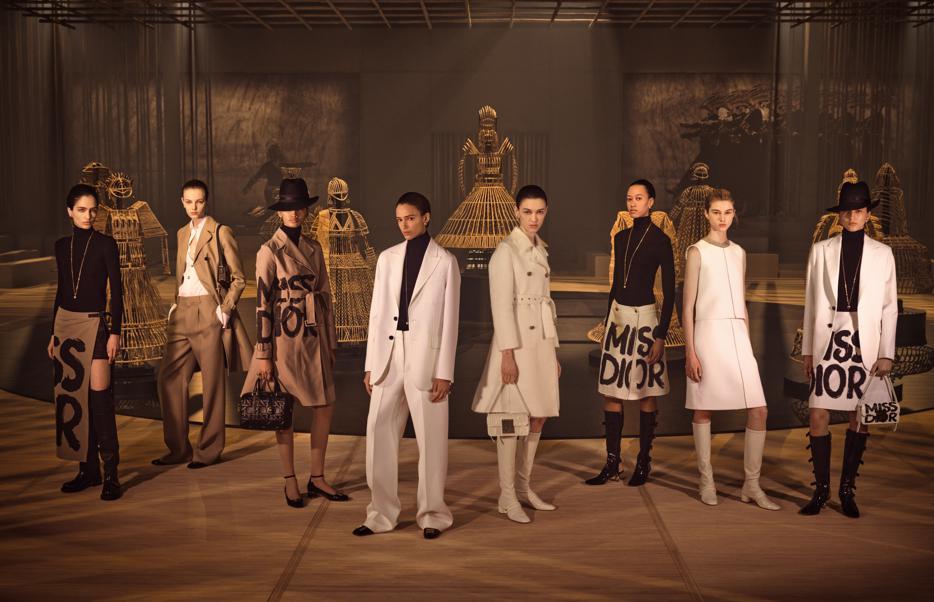

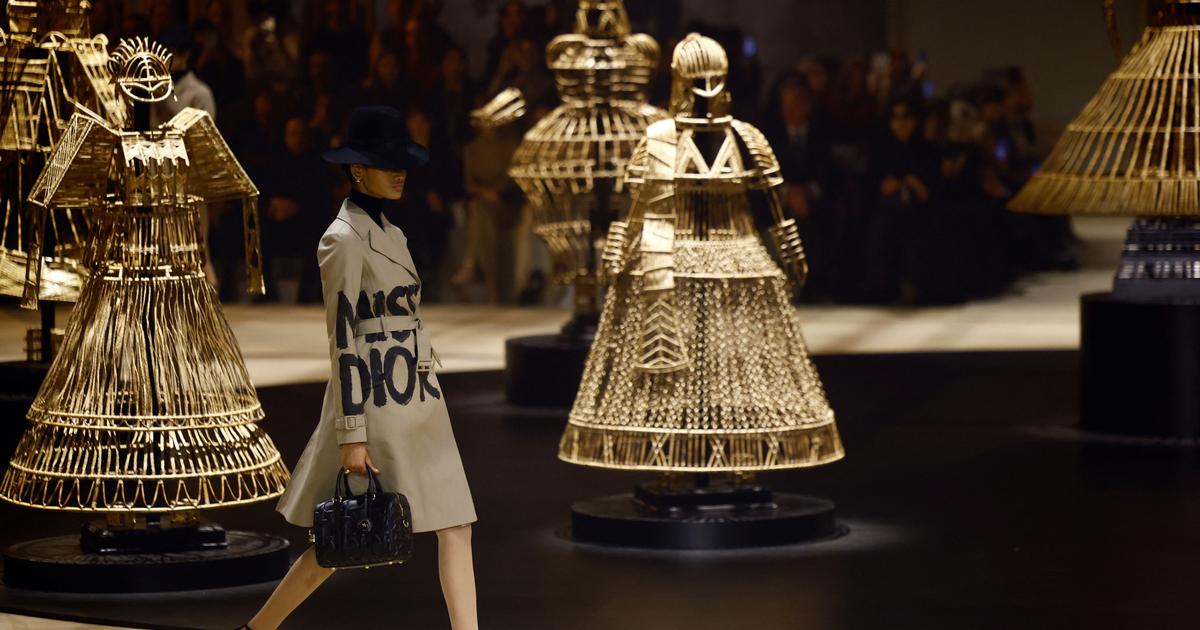
/cloudfront-eu-central-1.images.arcpublishing.com/prisa/2C5HI6YHNFHDLJSBNWHOIAS2AE.jpeg)



